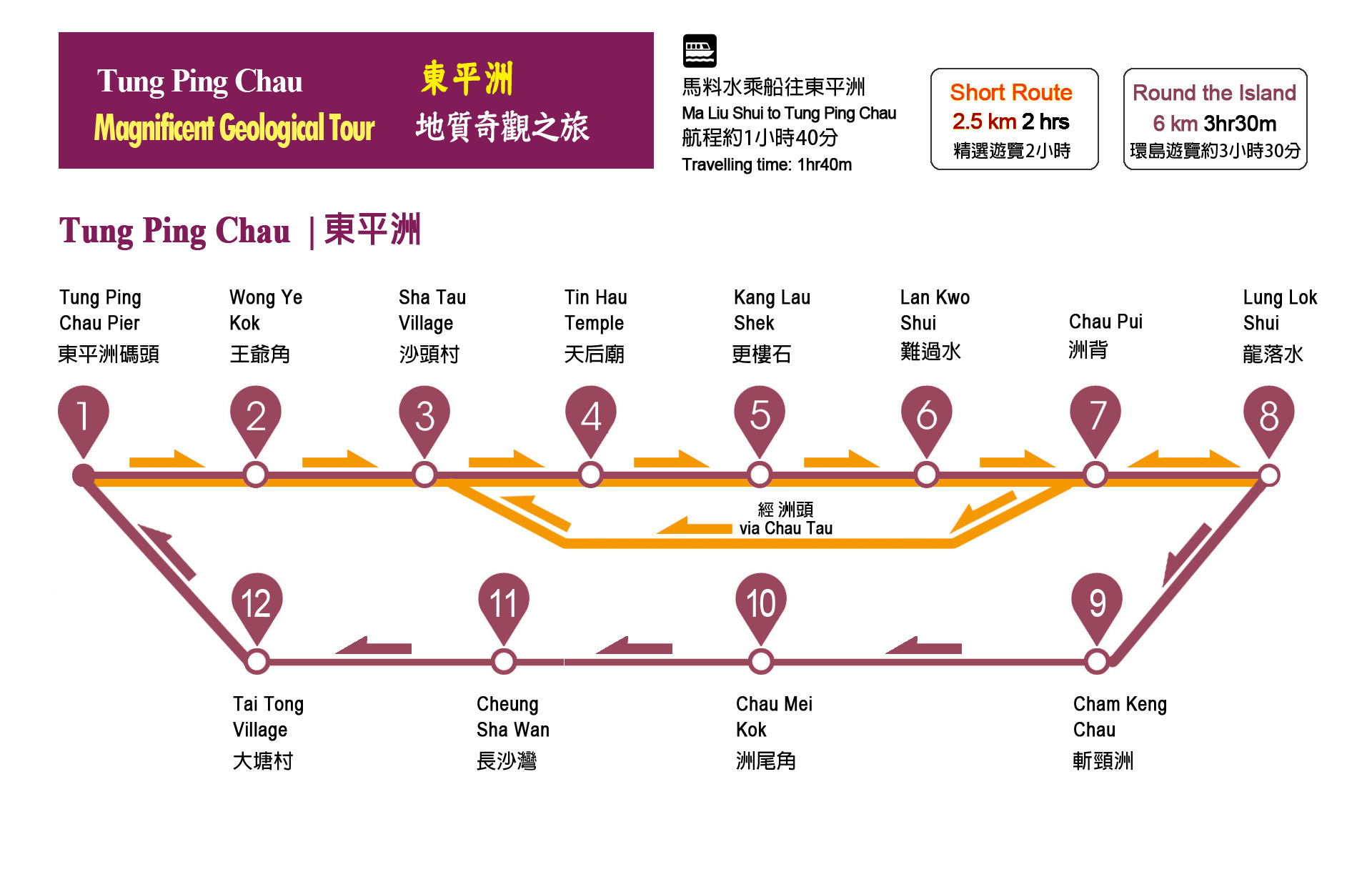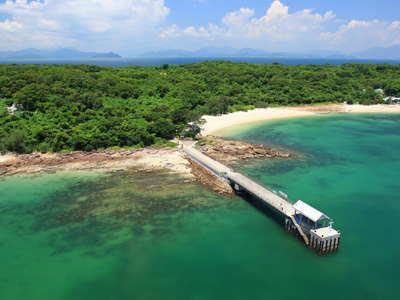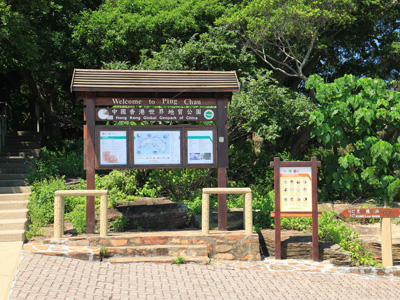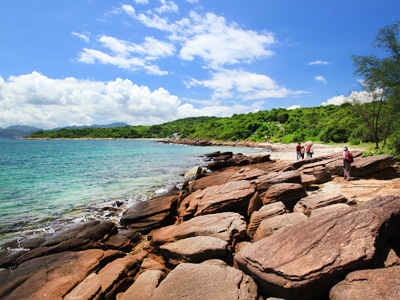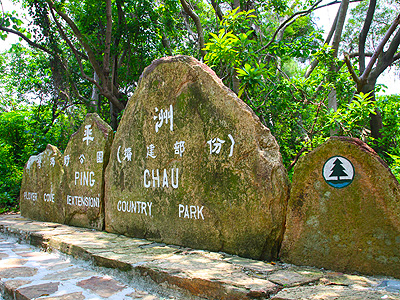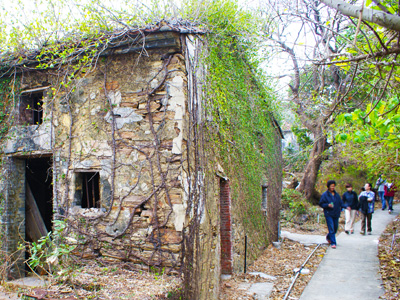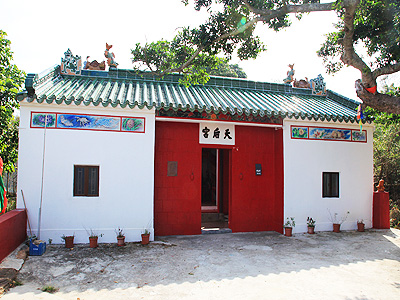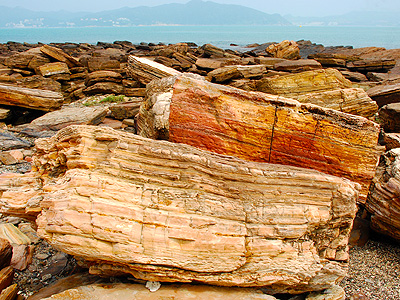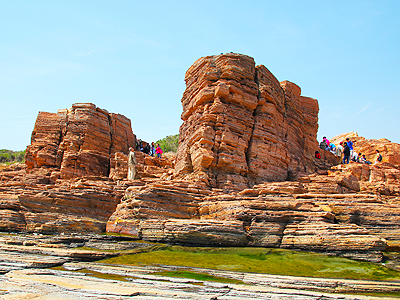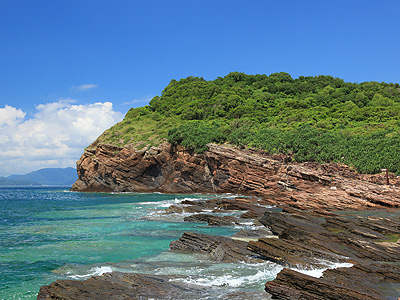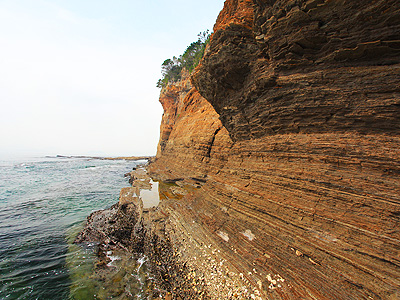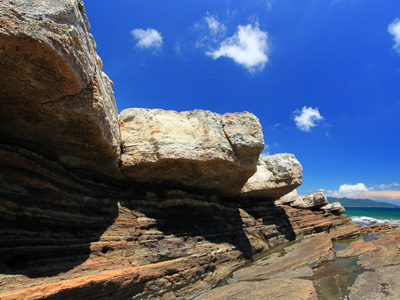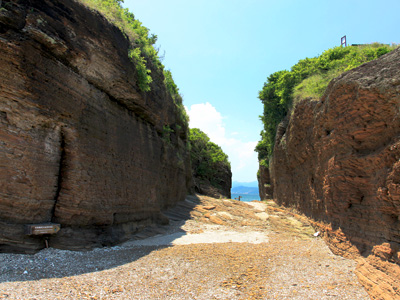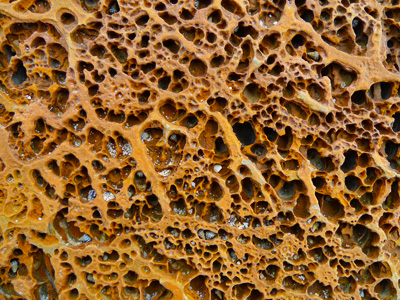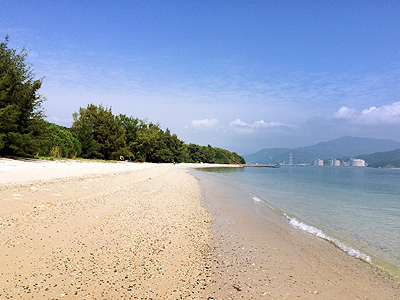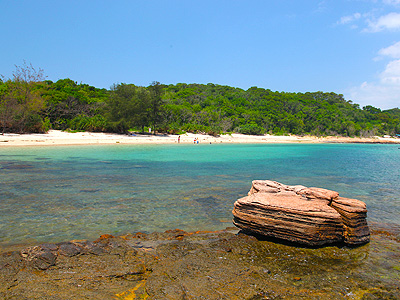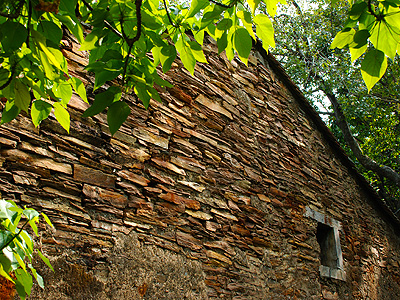
Tung Ping Chau
Easternmost Flat Island (One-day course)
1. Clearly defined bedding and distinctive sheet conformation
This is the most significant characteristic of shale. Every layer is 1 to 5 mm
thick. Overlapping each other, the coarser-grained siltstone layers and the
finer-grained mudstone layers have clear lamination and sophisticated structure. These
shale beds are believed to date from Late Cretaceous to Early Tertiary. It is a safe
guess that Mirs Bay and Tung Ping Chau were a remote salt lake detached from land. As a
result of sedimentation over long ages, shale resembling a layered sponge cake emerged
in the hypoxic, highly salt and still water.
2. Attractive and colourful
Shale is usually made up of pyrite, geolite and augite. The vivid colours come from
micrograined calcium, iron and magnesium particles that the rock contains. After
formation, the rock was exposed to weathering and wave action, creating eye-dazzling
plum, ochre, charcoal and bottle-green outcrops.
3. Vague ripple marks
Close observation will reveal vague or faint ripple marks in every layer. We can
thus infer that the rock was close to the lake surface or submerged in relatively
shallow water at the time of formation. In such setting, even small ripples would leave
detectable marks.
4. Emulsion and regeneration of vertical lamination
At Chau Mei Kok, you can find vertically fused or dotted reticulation on the shale
sections caused by emulsion. As shale has high calcium content, when it is subjected to
tidal, wave and sea current erosion, as well as impacts of salinization, wind, sun and
rain, it develops melted calcium sections similar to stalactites. Later when the melted
calcium is released, it flows out vertically at the outcrop tips or agglomerates into
visible dotted reticulation. This is called vertical emulsion.





